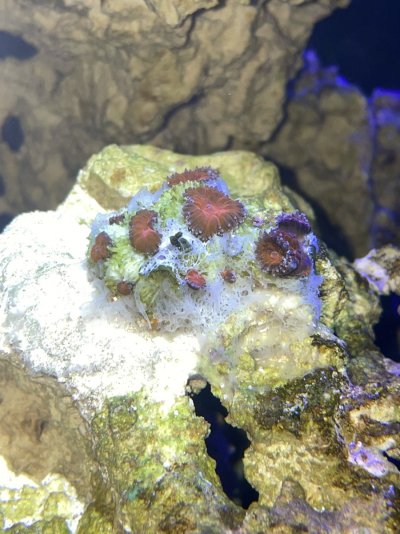So a few weeks ago I added two blue Orphek bars. It was too much PAR and I noticed a few corals pulling back and realized quickly to make adjustments. All corals which were “singed” are recovering now, and I thought this Acan was also recovering well. This morning I noticed this clear, hazy white trabeculated “growth” all around it. Is this early skeleton? I did see a little of it a few days ago and wondered if it was a result of inflaming the poor thing. I noticed today another Acan (which is better shaded) does not have this though which sent up red flags. Anyone know what that is?
















